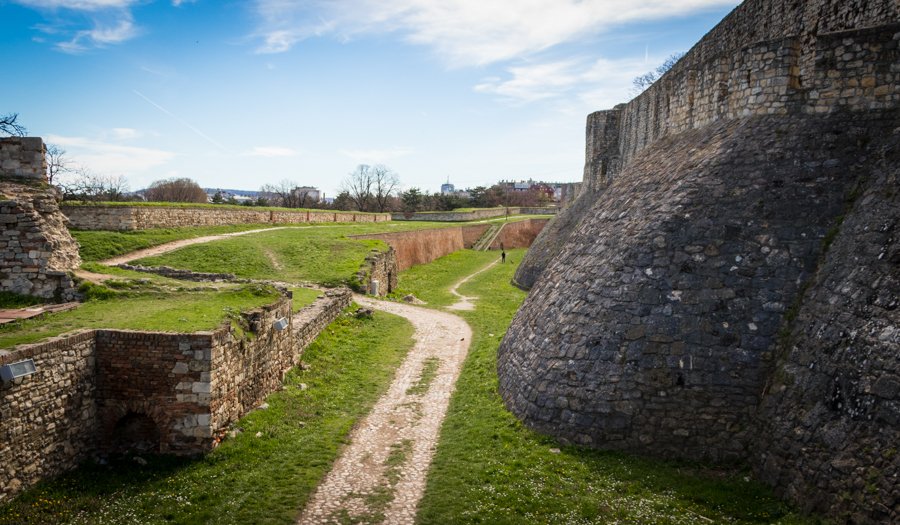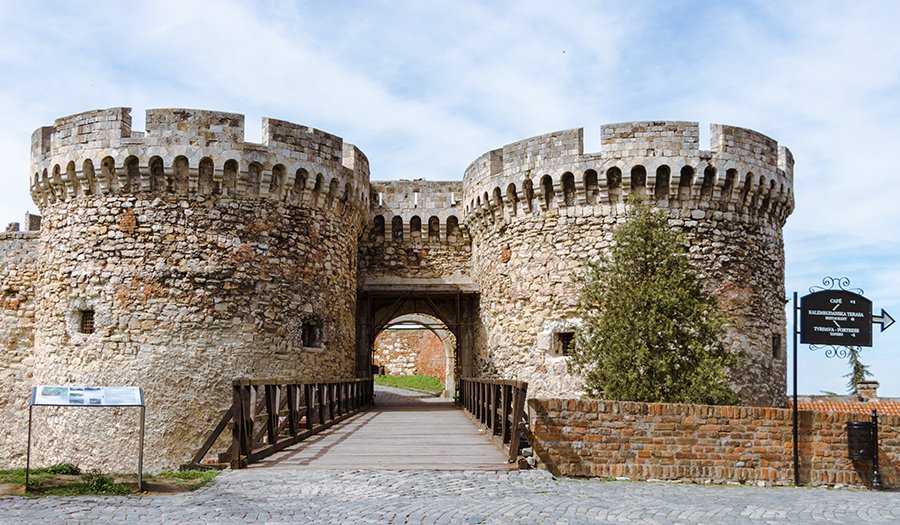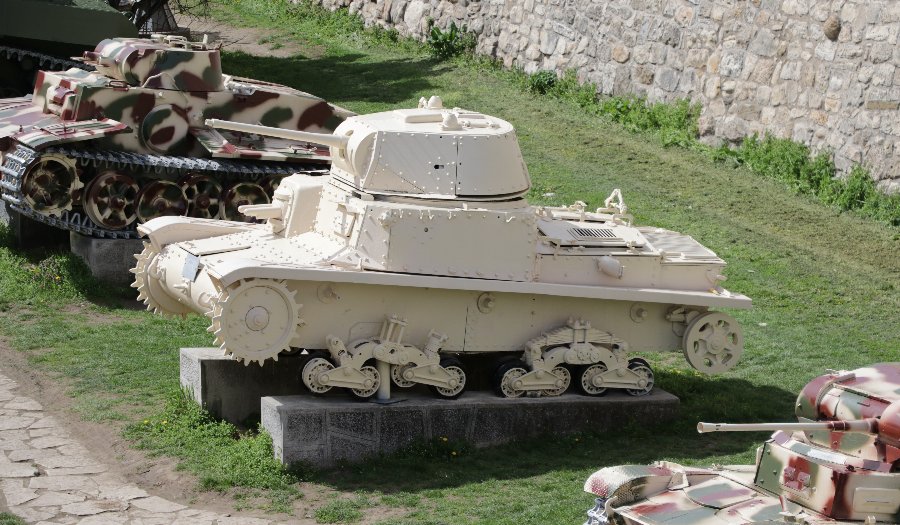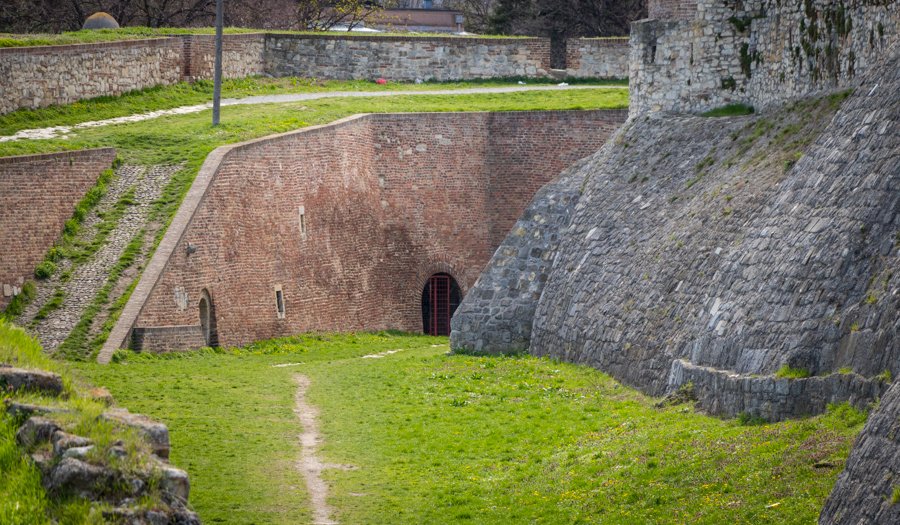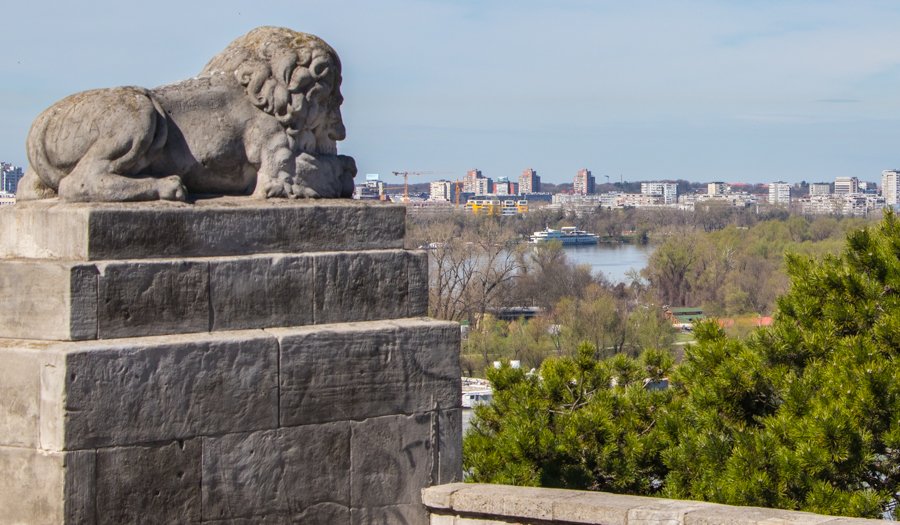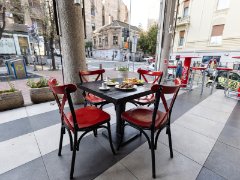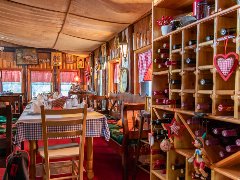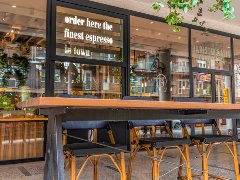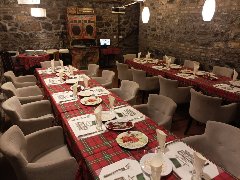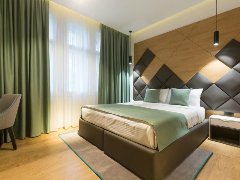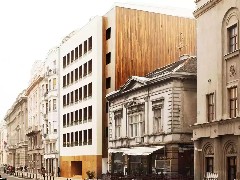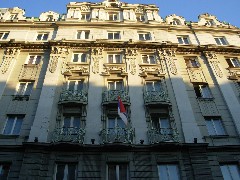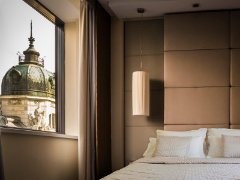Belgrade Fortress is located on top of the cliff-like ridge overlooking the confluence of the Sava and the Danube. This is the last raised ground in the Balkan Peninsula that controls the access to the Pannonian Basin and the navigation on the Sava and the Danube. This is a position of outstanding strategic importance, due to its role as a border fortress throughout its history. It served to guard the border between the Roman Empire and barbarian lands across the Danube and the border between the Ottoman and Austro-Hungarian Empires. So many times it was destroyed, rebuilt and redesigned. The Romans were the first to build a fort at this site in the late 1st century as the headquarters for the IV Roman Legion - Flavia Felix. Its remnants are barely visible today. Belgrade Fortress consists of the Upper Town, Lower (or Water) Town and Kalemegdan Park. The present layout of the Fortress took shape in the late 18th century, but there used to be many more buildings within its walls that had perished in different battles.
The Upper Town is in the heart of the fortress, it was Belgrade’s last line of defence and the place of residence of the city commanders. In the days of Roman Empire it was rectangular in shape, its walls remained parallel, with numerous turrets for archers. With the emergence of artillery weapons, the Upper Town expanded further and was fortified with a new system of defensive walls with triangular ravelins and bastions. Today these ramparts conceal many secluded spots, attractions: Outer Stambol Gate, Big Ravelin, Guards Building on the Big Ravelin, Karadjordje`s Gate, Inner Stambol Gate, Military Museum, Sahat Tower, Sahat Gate, Baroque Gate, Damad Ali Pasha`s Turbeh, Upper Town’s Small Gate, Big or Roman Well, King Gate, The Victor monument, Memorial Plaque Dedicated to the Defence against Turkey in 1456, Mehmed Pasha Sokolovic Fountain, Defterdar`s Gate, Despot Stefan Lazarevic Monument, Despot Gate and Castellan Tower, Zindan Gate Complex, Leopold Gate.
Lower Town during the Middle Ages was a thriving settlement with many houses, churches, squares and a market, encompassed by thick walls. There was a harbour for merchant vessels and warships. During a siege, a heavy chain would be drawn across the harbour mouth to block the entry. Nearly all buildings of the Lower Town were swept away in various sieges and bombings. Located on the Lower Town: Ruzica Church, St. Petka`s Church, Mausoleum of Belgrade Defenders, Jaksic`s Tower, Hamam – Old Turkish Bath, Big Gunpowder Magazine, Vidin Gate, The Gate of Carlo VI, Military Kitchen, Nebojsa Tower, St. Jakov`s Bastion.
Kalemegdan Park was developed in the 19th century on a plateau between the Belgrade Fortress and settlements that ware kept bare in order to spot better the approach of the enemy. During the Ottoman rule, it was also the site of a slave market and a scaffold. The park features: Beo Zoo Park, Memorial for the Delivery of Keys, Monument of Gratitude to France, Fountain “Fisherman”, Bandstand, Small and Big Staircase, Tomb of National Heroes, Japanese fountain, Little Kalemegdan, Cvijeta Zuzoric Art Pavilion, Fountain Awakening, The Genius of Death, Sculpture Weary Soldier, Sculpture “Partisan with children”, Branko Radicevic Monument, Marko Miljanov Memorial Bust, Jasa Prodanovic Memorial Bust, Jovan Skerlic Memorial Bust, Jovan Subotic Memorial Bust, Ivan Goran Kovacic Memorial Bust, Jovan Gavrilovic Memorial Bust, Djura Danicic Memorial Bust, Vojislav Ilic Memorial Bust, Djura Jaksic Memorial Bust, Simeon Roksandic Memorial Bust, Janko Veselinovic Memorial Bust, Milos Crnjanski Memorial Bust, Milos N. Djuric Memorial Bust, Borisav Stankovic Memorial Bust, Aleksa Santic Memorial Bust, Jovan Ducic Memorial Bust, Kosta Tausanovic Memorial Bust, Stevan Mokranjac Memorial Bust, Radoje Domanovic Memorial Bust.
Belgrade Fortress is located on top of the cliff-like ridge overlooking the confluence of the Sava and the Danube. This is the last raised ground in the Balkan Peninsula that controls the access to the Pannonian Basin and the navigation on the Sava and the Danube. This is a position of outstanding strategic importance, due to its role as a border fortress throughout its history. It served to guard the border between the Roman Empire and barbarian lands across the Danube and the border between the Ottoman and Austro-Hungarian Empires. So many times it was destroyed, rebuilt and redesigned. The Romans were the first to build a fort at this site in the late 1st century as the headquarters for the IV Roman Legion - Flavia Felix. Its remnants are barely visible today. Belgrade Fortress consists of the Upper Town, Lower (or Water) Town and Kalemegdan Park. The present layout of the Fortress took shape in the late 18th century, but there used to be many more buildings within its walls that had perished in different battles.
The Upper Town is in the heart of the fortress, it was Belgrade’s last line of defence and the place of residence of the city commanders. In the days of Roman Empire it was rectangular in shape, its walls remained parallel, with numerous turrets for archers. With the emergence of artillery weapons, the Upper Town expanded further and was fortified with a new system of defensive walls with triangular ravelins and bastions. Today these ramparts conceal many secluded spots, attractions: Outer Stambol Gate, Big Ravelin, Guards Building on the Big Ravelin, Karadjordje`s Gate, Inner Stambol Gate, Military Museum, Sahat Tower, Sahat Gate, Baroque Gate, Damad Ali Pasha`s Turbeh, Upper Town’s Small Gate, Big or Roman Well, King Gate, The Victor monument, Memorial Plaque Dedicated to the Defence against Turkey in 1456, Mehmed Pasha Sokolovic Fountain, Defterdar`s Gate, Despot Stefan Lazarevic Monument, Despot Gate and Castellan Tower, Zindan Gate Complex, Leopold Gate.
Lower Town during the Middle Ages was a thriving settlement with many houses, churches, squares and a market, encompassed by thick walls. There was a harbour for merchant vessels and warships. During a siege, a heavy chain would be drawn across the harbour mouth to block the entry. Nearly all buildings of the Lower Town were swept away in various sieges and bombings. Located on the Lower Town: Ruzica Church, St. Petka`s Church, Mausoleum of Belgrade Defenders, Jaksic`s Tower, Hamam – Old Turkish Bath, Big Gunpowder Magazine, Vidin Gate, The Gate of Carlo VI, Military Kitchen, Nebojsa Tower, St. Jakov`s Bastion.
Kalemegdan Park was developed in the 19th century on a plateau between the Belgrade Fortress and settlements that ware kept bare in order to spot better the approach of the enemy. During the Ottoman rule, it was also the site of a slave market and a scaffold. The park features: Beo Zoo Park, Memorial for the Delivery of Keys, Monument of Gratitude to France, Fountain “Fisherman”, Bandstand, Small and Big Staircase, Tomb of National Heroes, Japanese fountain, Little Kalemegdan, Cvijeta Zuzoric Art Pavilion, Fountain Awakening, The Genius of Death, Sculpture Weary Soldier, Sculpture “Partisan with children”, Branko Radicevic Monument, Marko Miljanov Memorial Bust, Jasa Prodanovic Memorial Bust, Jovan Skerlic Memorial Bust, Jovan Subotic Memorial Bust, Ivan Goran Kovacic Memorial Bust, Jovan Gavrilovic Memorial Bust, Djura Danicic Memorial Bust, Vojislav Ilic Memorial Bust, Djura Jaksic Memorial Bust, Simeon Roksandic Memorial Bust, Janko Veselinovic Memorial Bust, Milos Crnjanski Memorial Bust, Milos N. Djuric Memorial Bust, Borisav Stankovic Memorial Bust, Aleksa Santic Memorial Bust, Jovan Ducic Memorial Bust, Kosta Tausanovic Memorial Bust, Stevan Mokranjac Memorial Bust, Radoje Domanovic Memorial Bust.


